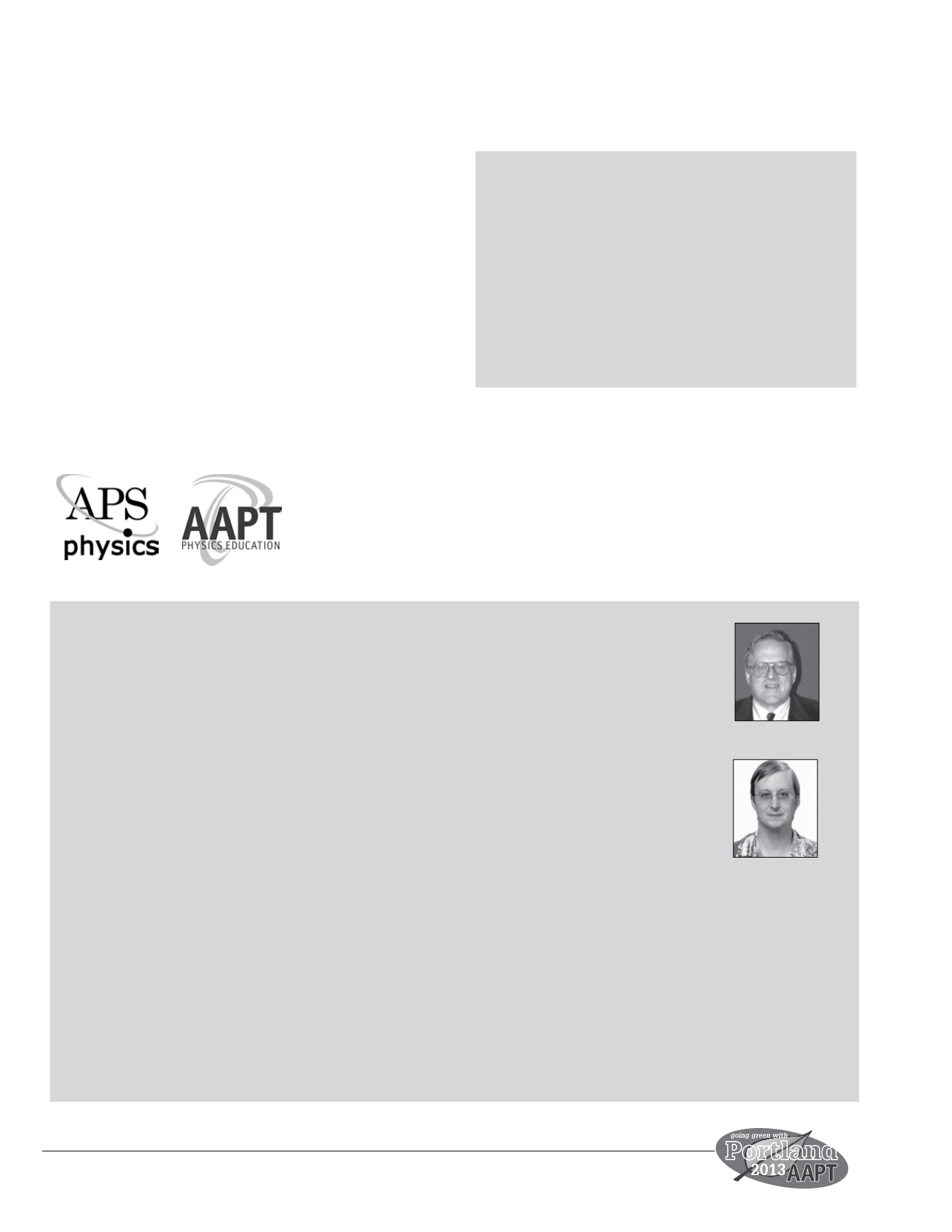
92
Portland
begun work to coordinate instruction, presenting core ideas, representa-
tions, and scientific writing in greater depth throughout our sequence. In
this talk I will present some of our early work in coordinating this instruc-
tion, including challenges and preliminary outcomes.
*This work has been supported by NSF grants 0837058, 0942391, and 1140860.
DJ03:
11:30-11:40 a.m. Pedagogical Content Knowledge in a
Course for Future Elementary Teachers
Contributed – N. Sanjay Rebello, Kansas State University, Physics Depart-
ment, 116 Cardwell Hall, Manhattan, KS 66506;
Dean A. Zollman, Kansas State University
We integrate pedagogical content knowledge into the fabric of a course
for future elementary teachers structured around an instructional model
called the pedagogical learning bicycle (PLB)—an adapted two-layered 3E
learning cycle. This model intertwines the construction of science content
knowledge (CK) with the development of pedagogical content knowledge
(PCK). This course aims to provide opportunities for future teachers to
develop skills reflecting on their own learning of physical phenomena,
understanding how children talk and learn about physical phenomena, and
learning how research literature describes ways in which children think
APS Plenary: Producing Superheavy
Elements
Location: Grand Ballroom I
Date: Tuesday, July 16
Time: 2–3:30 p.m.
Presider: Renee Diehl
Walter Loveland
Mark A. Stoyer
about physical phenomena. It also expects future elementary teachers
to apply their integrated understanding of CK and PCK to developing
age-appropriate lesson plans to teach physical science concepts in an
elementary science classroom. We describe the results of the first imple-
mentation of the course and its impact on student learning.
CKRL06: Crackerbarrel: Planning
Future TYC Meetings
Location: Broadway I/II
Sponsor: Committee on Physics in Two-Year Colleges
Date: Tuesday, July 16
Time: 12:30–2 p.m.
Presider: Renee Lathrop
The Two-Year College committee has been coordinating and planning
tandem meetings that focus on two-year college concerns and interests.
This session will be a planning session where we are looking for ideas and
suggestions on topics for future TYC meetings.
1. The Quest for Superheavy Elements
W. Loveland, Oregon State University, Corvallis, OR 97331
I will examine the current status of heavy element research. Among the questions addressed are: Why are
heavy elements important? What is their unique role in chemistry? How has the Periodic Table evolved with
time and what are the limits of the Periodic Table? How do you make new heavy nuclei? How does one do
chemistry one atom at a time? What are the prospects for the synthesis of new heavy nuclei? What are the new
ways of studying the atomic physics and chemistry of the heaviest elements?
2. Exploring the Limits of Nuclear Stability: Glimpsing the Island of Stability*
Mark A. Stoyer, Lawrence Livermore National Laboratory, Livermore, CA 94550
The Dubna/LLNL collaboration has been investigating the nuclear and chemical properties of the heaviest ele-
ments since 1989. Elements 113-118 have been synthesized and characterized using fusion-evaporation nuclear
reactions of 48Ca beams on actinide targets (237Np, 242,244Pu, 243Am, 245,248Cm, 249Bk, and 249Cf,
respectively) at the U400 cyclotron located at the Flerov Laboratory of Nuclear Reactions in Dubna, Russia.
This talk will discuss the ramifications of the experimental work during the last 10-15 years on the synthesis
of elements 113 – 118, including the recent IUPAC acceptance of element names for 114 (flerovium) and 116
(livermorium). Prediction of the heaviest element possible is highly uncertain because of the complex interplay
of strong nuclear forces, Coulomb forces, surface/volume effects, and shell corrections. For some combination
of protons (Z > 118) and neutrons, the strong nuclear force which binds nucleons together will not be able to
counter the Coulomb repulsion of the protons in a nucleus, and thus nuclei will cease to exist. Experimental
and theoretical efforts to locate and access the next region of doubly magic spherically shaped nuclei, the Island
of Stability, will be presented.
*This work performed under the auspices of the U.S. Department of Energy by Lawrence Livermore National Laboratory
under Contract DE-AC52-07NA27344.


